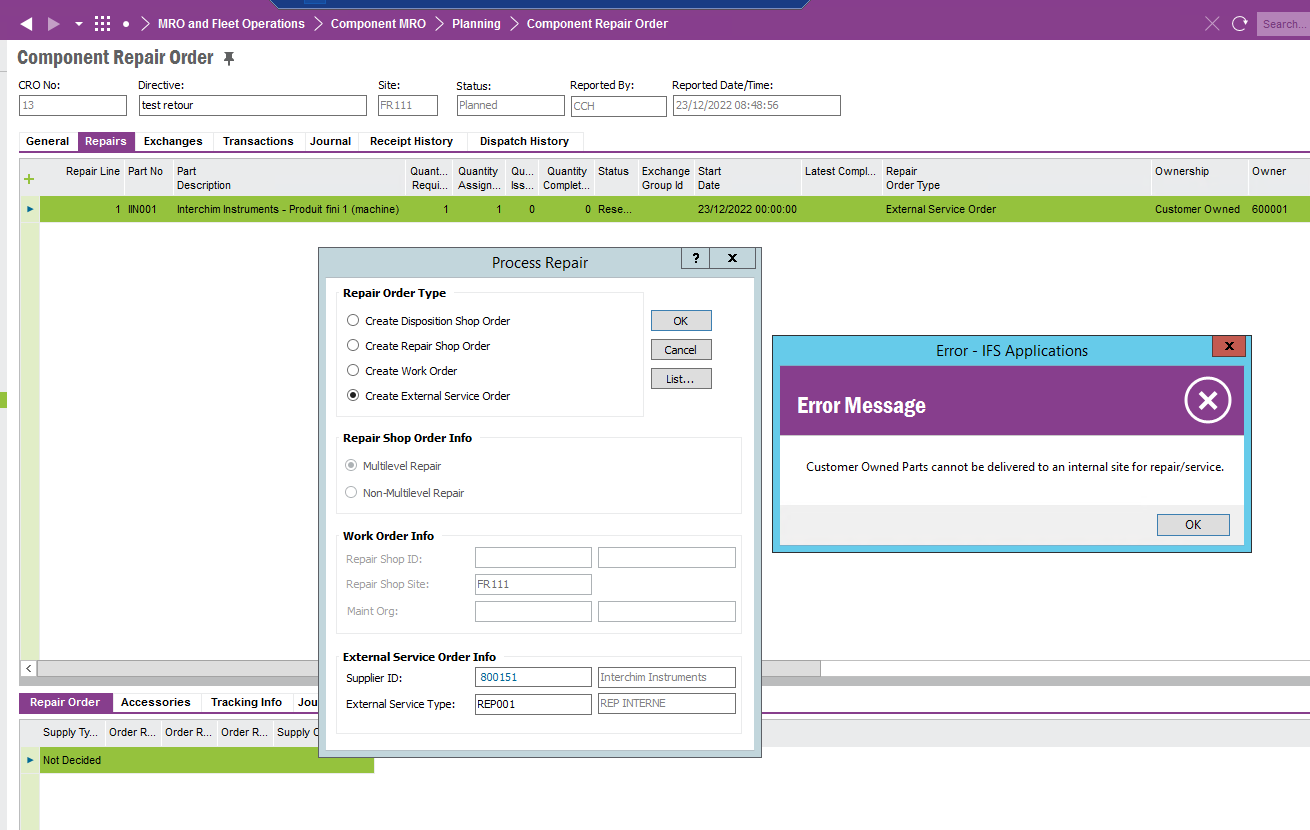Dear All,
I was wondering what the standard/best approach is to execute intercompany Repairs of non-serialized items.
The situation:
- Sales Company A is in direct contact with customer X
- Customer X has a problem with a non-serialized part and wants to sent it back to check if it can be repaired
- Repairs are not done in Sales Company A, but in Repair Company B - which is physically a different location than Sales Company A
- The invoicing of the repair costs needs to be done by Sales Company A to customer X
- Repair Company B can invoice an intercompany repair service to Sales Company A (at a lower rate than what the Sales Company A invoices the customer X)
What proces/combination of processes can we use here? The part is non-serialized, so wherever we can we need to use ‘Customer Owned’ so we can make a difference between regular stock and Customer Owned stock.
We are working on IFS Cloud.
Best Regards
Roel





